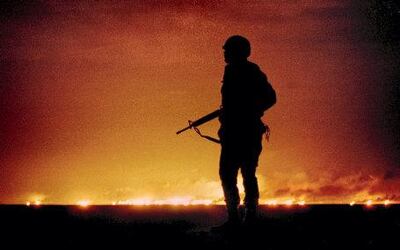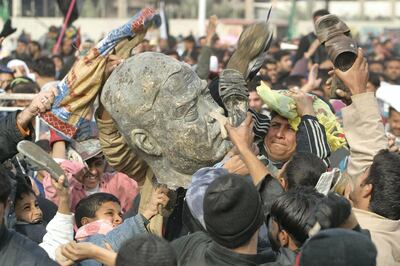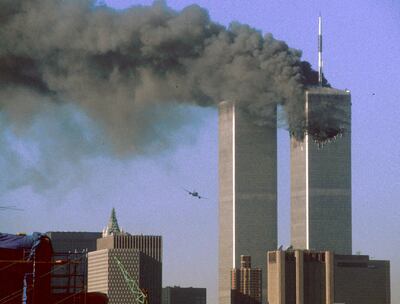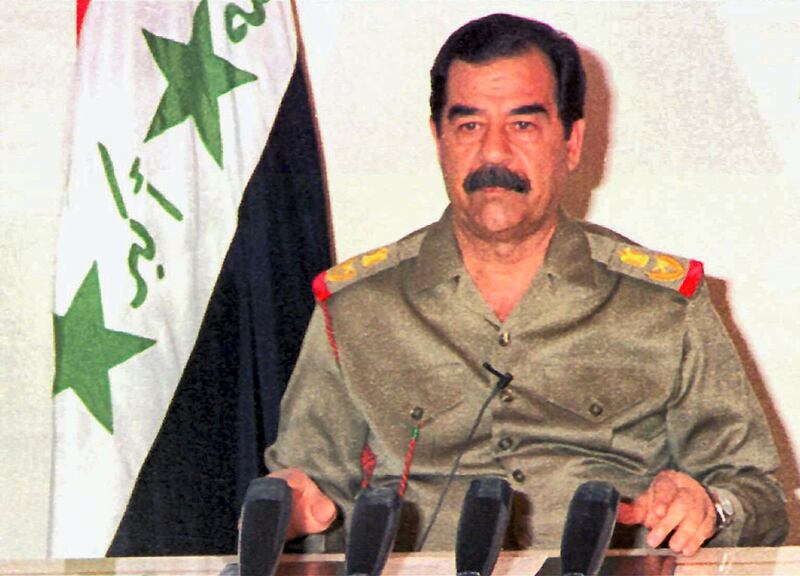When Iraqi dictator Saddam Hussein launched his ill-fated invasion of Kuwait almost 30 years ago, he inadvertently launched a new era of western military interventions in the Middle East, the impact of which continues to reverberate throughout the region to this day.
In Iraq, Afghanistan, Syria, Libya and a host of other places, the massive challenges being faced arguably all have their origins in the revival of the West’s appetite for involving itself militarily in the Arab world. This can be traced back to Saddam’s belief that he could march into Kuwait, which the regime in Baghdad had long considered to be Iraq’s 19th province, without provoking a response from the West.
After all, the year 1990 was believed to herald, or so then US president George HW Bush had asserted, the start of a “new world order” – one in which the global divisions that shaped the geopolitical landscape from the end of the Second World War to the collapse of the Iron Curtain in 1989 were coming to an end. Prominent American writers such as Francis Fukuyama were even prompted to predict the end of history, arguing that the triumph of the liberal democracies over the Soviet Union would herald a new era of global peace.

The disinclination of the West to involve itself in further military confrontations on the scale that had defined the Cold War era was certainly a factor in Saddam’s thinking, further strengthened during his now infamous interview with diplomat April Glaspie, then US ambassador to Iraq, whom he believed had given him a green light to carry out the invasion without facing any serious censure from Washington.
This should go down as one of the worst strategic miscalculations of the 20th century. Far from turning a blind eye to his irredentist ambitions, it prompted the Bush administration to assemble one of the most formidable military coalitions of modern times. Compared with the numerous western military interventions of the past three decades, Operation Desert Storm – the codename for the military offensive – can be judged a great success. Kuwait was liberated within the space of just weeks once the military offensive began in January 1991 and, once this basic objective had been achieved, the US dissolved the coalition and sent the troops home.

Arguably the most controversial aspect of this decision was Washington’s reluctance to press home its military advantage, and extend the campaign into Iraq itself and attempt to overthrow Saddam, thereby ending his bellicose meddling in the affairs of other Middle Eastern states. After careful consideration, it was concluded that regime change in Baghdad was not part of the UN-backed mandate; also, removing Saddam would cause political instability in Iraq that might be exploited by neighbouring Iran, which had always entertained ambitions of extending its influence over the country’s majority Shia population.
Thus, having forced Saddam to sign a punitive ceasefire agreement that, among other stipulations, required him to dismantle his weapons of mass destruction arsenal, the military coalition packed up and went home.
Thirty years later, there are some stand-out lessons from the war that modern-day leaders in the West might be well-advised to consider.
The first is that, if you are going to launch a military intervention, then make sure you do not overstay your welcome, which has been one of the main drawbacks of the more recent military interventions in Iraq and Afghanistan in 2001 and 2003, respectively. In both instances, as with the 1991 liberation of Kuwait, the West arguably had justification to do so.

In Afghanistan, the Taliban regime had provided Al Qaeda's architects of the 9/11 attacks against the US with a safe haven and a launchpad, and refused to end its association with them. This prompted the formation of a US-led coalition to overthrow the government in Kabul and destroy Al Qaeda’s infrastructure.
The argument for removing Saddam is more nuanced, not least because he had placed most of his WMD technology into cold storage. But he had never fully complied by the terms of UN Security Council Resolution 687, which had ended the First Gulf War, thereby provoking period clashes with the US and its allies throughout the 1990s until, with the heightened tensions caused by 9/11, the West rediscovered its resolve for confronting – and removing – rogue dictators.
However, the early successes of both interventions were marred by the decision to maintain a large-scale military presence that ultimately succeeded in alienating the support of the indigenous populations of both countries.
The other important consideration today’s generation of policymakers would be well advised to take on board is to give careful consideration of the likely consequences of undertaking action in the first place. One of the reasons that Iraq is currently experiencing so many difficulties is because Iran – as the George HW Bush administration predicted – has been able to extend its influence throughout the country following Saddam’s overthrow. Meanwhile, the 2011 military intervention in Libya has reduced the country to chaos, while the West’s confused approach to the Syrian conflict has ultimately ended up working to the advantage of Syrian dictator Bashar Al Assad.
If there is one key message from the liberation of Kuwait for any western leader thinking of launching military interventions must be: think carefully of the consequences before you act.
Con Coughlin is the Telegraph’s defence and foreign affairs editor. He is also the author of Saddam: The Secret Life






